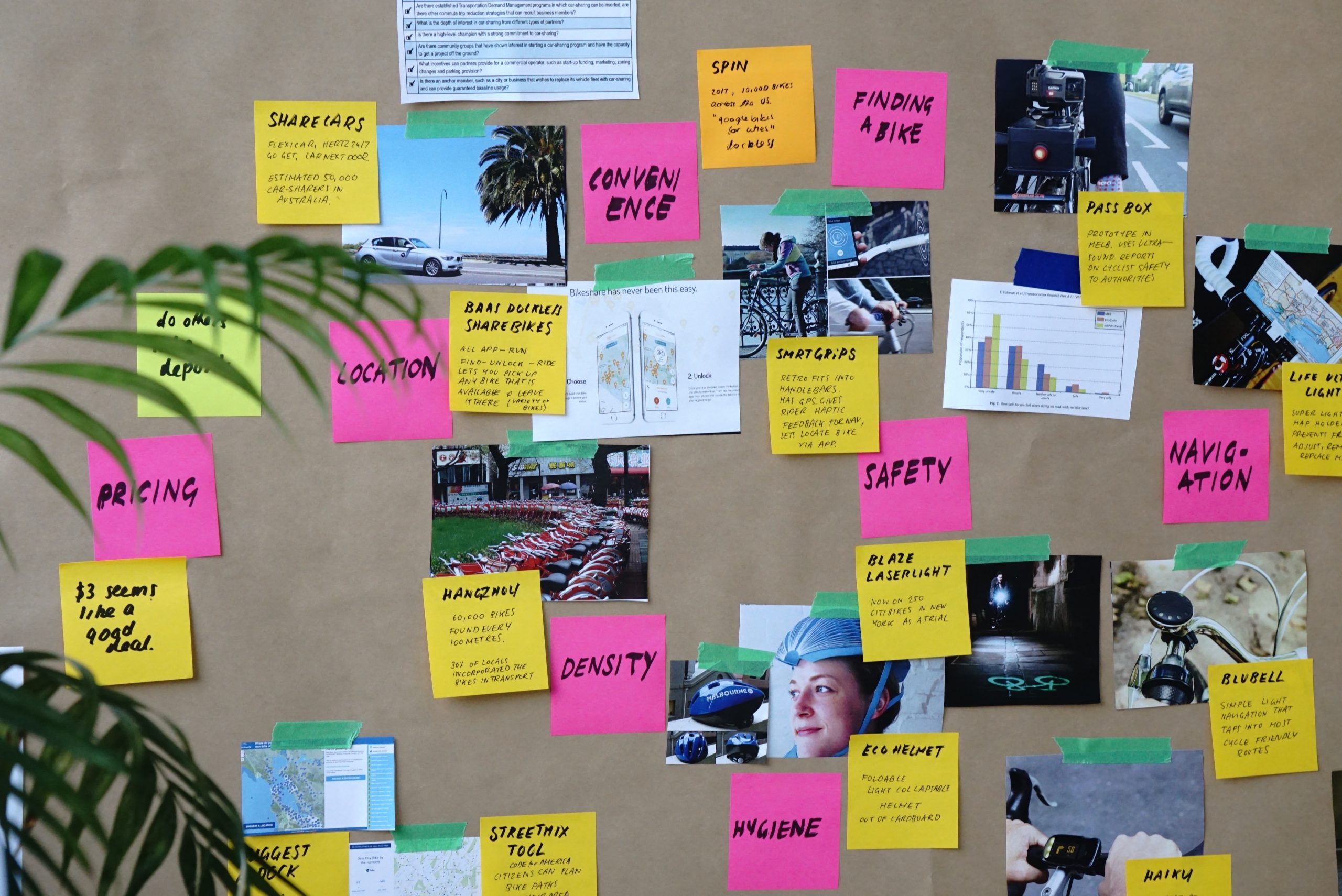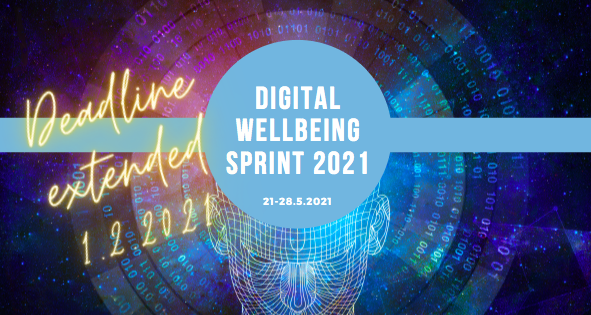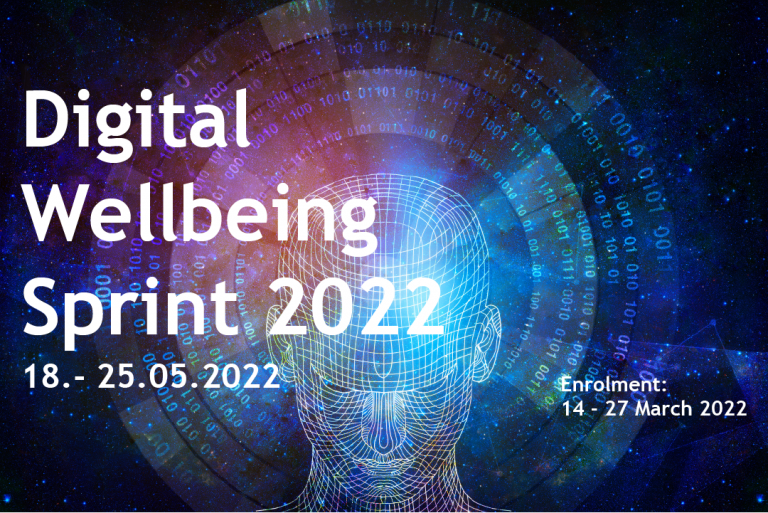Who knew that studying can be this exciting? Learnings from 2021 Digital Wellbeing Sprint
I had the greatest pleasure of being a member of the amazing tutor team in the 2021 Digital Wellbeing Sprint. I was tutoring and facilitating the process for the Emooter team. This was my first time to get to know the five day Design Sprint created by Jake Knapp. I was very impressed of how smartly the process has been put together, combining series of co-creation methods, team work as well as individual thinking time. In this blog, I reflect and share some of my key learnings from this trip.
Originally, the Design Sprint is planned to last five days, from 10 am to 5 pm and from Monday to Friday. In the Digital Wellbeing Sprint we have extended this by two days and had a bit of extra time in the beginning for the challenge introductions and team building and had a pitch day at the end of the week. Besides that, we followed the Design Sprint process quite closely. The process starts by defining the challenge, the long term goal and the specific sprint questions. After setting the target, ideation begins, continues with sketching towards making a decision of what to prototype and test. And final pitches – quite straight forward and well instructed in the Sprint book (Jake Knapp: Sprint – How to solve big problems and test new ideas in just five days) and yet full of learning moments in all levels!
1. Trust the Process
First of all, this was a great opportunity to learn the Design Sprint process itself. As Service Designers tend to say, learn by doing. By attending the event, you learn a variety of methods, how to combine them and how to make it a coherent and logical process. We arranged this online, so it gave also the opportunity to do it all remotely and on the Miro board. If you’re not familiar with the agile ways of working, this is one way to learn some examples of how it can be done in agile software development also in the real world in IT companies.
The process guides you to do this one step at a time. It may feel confusing and big in the beginning, but trust the process, it works (it has been tested so many times). At times I felt that it’s going so quickly and I always feel that some good ideas are not thought of because there isn’t enough time. Then I realized that the process supports the ideas to evolve and develop, so just trust the process.
2. Teamwork is the key
Secondly, as a facilitator of the process, this was the front seat to follow teamwork. How the team forms from a group of individuals into a team which has a goal, is motivated and committed to succeed and perform, in a very short time. And to be honest, having a team, is what makes this process work. The week is busy and it is very important that the team members are committed to the process and everybody does their part. I can guarantee that the final prototype does not get built by just one person and one idea, it is built by the team and it has the fingerprint from everyone of the team. The process also supports this in a very clever way of having stages in which everybody works on their own and presents their findings or sketches to others and then they are developed further as a team.
The process is also so quick and tightly scheduled that you also have to take a leap of faith and trust your team members. There is no time to go over everything all the time with everybody, you just have to share the tasks and believe that there will be something to test on the final day. Just remember to communicate and agree who is doing what. So basic, but in practice often forgotten or assumed that the others know, they don’t. (I often wonder this – why is it that we think that the others know what I’m thinking? Because we think that the others think like I do, well they don’t.) And this is what makes teamwork so great. A team always makes so much more than each individual on their own.
3. Facilitation in Zoom
This was an excellent teacher for facilitation skills, too. The process is quite well constructed and in that way easy to follow. You don’t need to search for appropriate methods. We added our own energizers for the mornings and sometimes in the afternoons to keep everybody focused, but otherwise followed the methods suggested in the book.
As mentioned, we did this all remotely and it was my first time to do a longer process like this as a facilitator. The Miro board definitely helped and it would have been difficult to facilitate without it. Facilitating remotely is very efficient, because you don’t need to wait for everybody to come back to the main room, you just close the break-out room and that’s it.
I’m more experienced in face to face coaching and facilitating and I noticed that it was really difficult to follow that everyone is onboard. At some stages (especially in the beginning) it’s important to be quick and vocal which is difficult for some (myself included). Some, but definitely not all thinking and processing can be observed the same way remotely than it is face to face.
4. Keep focused
Lastly, the most important lesson from this (and in life in general), is to keep focused. Having a clear target is so important when time is scarce. And time always is. We are challenged by so many interruptions nowadays that you need to be very determined to keep yourself focused on the target. It’s so easy to get distracted. But first you need to set the goal.
The author of the Sprint book, Knapp, talks about this in the video. The idea of the 5 day Sprint has started with the thought of how to be productive and more efficient, so that you also have time to do other important stuff in life.
And what is important? Wellbeing, which brings me to my very last point:
5. The Emooter

I have to say that our team was working on an a very important and interesting challenge from Emooter . The challenge was to ideate how Emooter can combine physical wellbeing data from personal devices with self-reported mental wellbeing data within the Emooter app in a way that is interesting and motivating for the users. I was personally very excited about the challenge and as a facilitator it was sometimes difficult to keep my own ideas on the side. Emooter is on a very important mission, so if you’re reading this, please take a look. I wish all the best to Emooter, I hope they become a success!
I am very grateful that I took part in this. Thank you to the whole tutor crew, the most positive and encouraging, Michelle, our Project Manager, the teachers Jarmo, Päivi and Merja. And to all teams – I hope you found the experience exciting and educational, you all did a great job! In just 7 days you built a start for something new and amazing (and even if you didn’t, you just failed fast and didn’t waste too much time on it.) But this was no waste of time, either way it’s time well spent!

About the author:
Jaana Marin is a Service Design Master student at Laurea University of Applied Sciences. Jaana is an experienced team manager with coaching skills and business background. She is passionate about creating working life that is based on trust, learning and well-being. Currently, she is working as a People Lead in the IT field.






